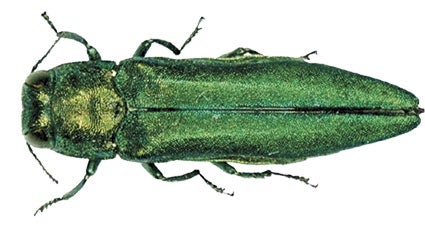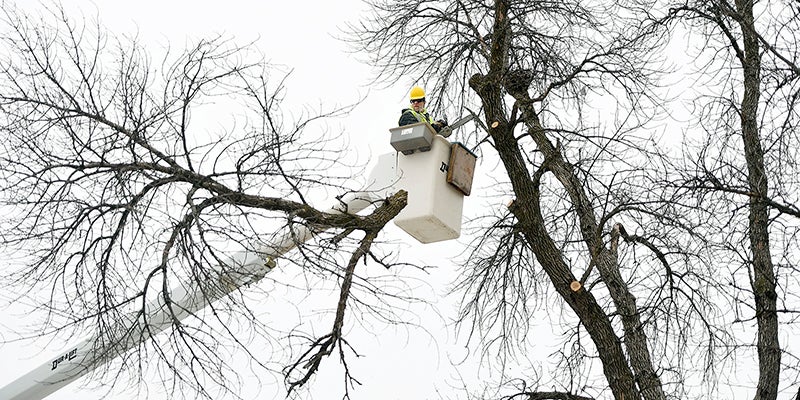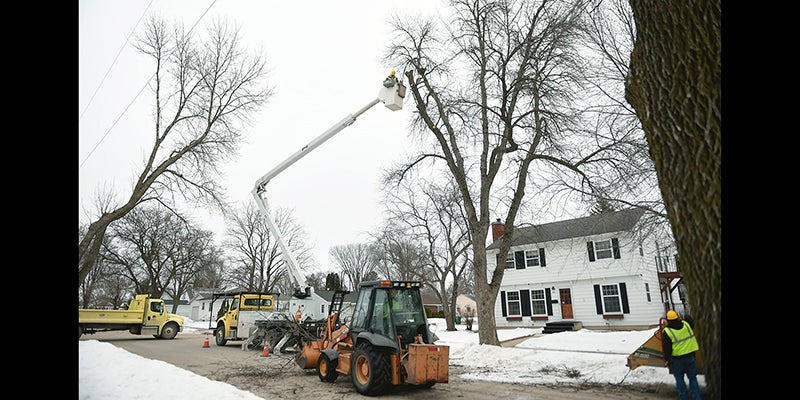Front line defense
Published 6:55 pm Friday, March 3, 2023
|
Getting your Trinity Audio player ready...
|
With the Emerald Ash Borer entrenched in Austin, city begins taking steps to mitigate damage, involve homeowners
On Tuesday, in the City Council Chambers, the Austin Parks, Recreation & Forestry (PRF) Department will be holding a third informational meeting on plans to further cope with the Emerald Ash Borer in Austin.
The meeting, set to begin at 5:30 p.m., will last roughly an hour and like the two previous meetings will further lay out these plans that will ultimately involve the city removing an estimated 2,400 ash trees from city property in an effort to curb the further spread of the invasive species.
However, the meetings also serve as a basis to get information to individual homeowners who have ash trees on their property and the next steps they too will have to take.
“As important as this whole process is, it’s also timely because the longer we wait on it the worse it’s going to get,” said PRF Director Dave Merrill.
Crews have already begun removing trees in Austin, largely in the eastern part of the city. To date, Parks Supervisor Randy Hofner estimates over 80 ash trees have already been taken down in an effort to curb the further spread of EAB, which was officially affirmed to be in Austin by the Minnesota Department of Agriculture last November.
However, the reality is officials knew EAB was likely already in the community after it was detected in eastern Mower County near Racine a number of years ago.
“We’re aggressively pursuing it and maybe corralling it,” Hofner said. “We’re working more in the heavily invested areas first and trying to evaluate treatment of trees that are yet healthy.”
According to Merrill, Austin’s current plan is to remove 250 trees a year along a 10-year timeline, something the director admits is a bit of an advanced timeline to try and stem the tide.
“The goal is to remove 250 trees a year, which is pretty aggressive and that’s all within our resources,” Merrill said, further explaining that the plan currently in place does not account for contracting tree-felling work outside of the city.
The catch is, that the city’s plan doesn’t work if citizens don’t also take part. As of now, there is no money from any government entity to combat EAB in trees on private property, which Merrill admits can be a pretty heady expense placed on homeowners.
However, if homeowners choose not to do anything, the results can simply negate the city’s efforts, while at the same time making removal of trees even more expensive.
“The city can stick with its plan the best we can, but if the residents don’t get on a plan and get a little aggressive with their property, then the infestation just moves off city property onto private property,” Merrill said. “This is a community problem.”
At its root, a tree infested with EAB will be destroyed by the larvae, which feeds on the tree just under the bark, creating tunneling that ultimately kills the tree from the top down.

Emerald Ash Borer
As the tree dies, it dries out and can become dangerous. The wood becomes so brittle that it can be unpredictable when the decision is finally made to cut the tree down and can be dangerous if left alone, which could result in the tree simply falling.
By that point the price tag for removing a tree goes up.
To take a tree down early can run around $1,000 to $2,000, however, that price can be doubled if waiting until the end to take the tree down.
“If you just let your tree die, it’s going to be more expensive to remove,” said forestry team member Kris Hahn. “They are just unpredictable. You don’t know if they’re going to break or when they’re going to break.”
Another tricky aspect is simply identifying an ash tree infestation, though Hahn explains that there are telltale signs including leaf die-off starting at the top and working its way down. Shoots at the base of the tree, put up by a stressed tree trying to gain lost energy from dead leaves, is another indicator as well as woodpeckers picking at and flaking the bark in an effort to get to the larvae.
“In the really late stages are D-shaped exit holes at eye level,” Hahn said. “(The larvae) has worked its way down the tree and the tree is dead.”
There is an option to treat the tree if caught early enough, reflected in 30% or less leaf die-off. A tree treated every two years can be upheld indefinitely, but even that comes with a cost of $100-$200 every two years.
However, the reality for the city is that all of this is simply a delaying action. However, if some of the trees can be treated than those efforts can make the 10-year removal plan workable.
“We’re not going to be able to afford to treat every tree forever, but if you can treat some and delay the process so all of these trees aren’t dying within a two or three-year span, then it allows the 10-year plan to be manageable,” Merrill said.
Part of the treatment plan will be on display at the Jay C. Nature Center, who has such a high concentration of ash trees that it has qualified for a grant to fund a unique way of fighting the EAB.
“The Nature Center is a cool example that because of the population of trees there and density, they are now going to be eligible for this parasitic wasp to be released there,” Merrill said. “These aren’t the big, scary, stingy wasps. They’re only reason for existence is to kill Emerald Ash Borer. We’re taking a multilevel approach to dealing with this in our community.”
The city is also planning to replace ash trees taken down with at least a 1-to-1 renewal rate of trees to replenish those that are cut down.
They may not be placed in the same spot, but the replacement is important to keep the diversity of trees in Austin varied to hopefully avoid unforeseen infestations down the line.
Merrill,and the rest of the forestry division of PRF, are hoping the public continues coming to the meetings, not only to learn about EAB and their role, but to be kept abreast of plans that will continue to change.
“It’s an ever-evolving plan,” Merrill said. “It changes year to year, plan to plan. Circumstances change, we have to too.”








